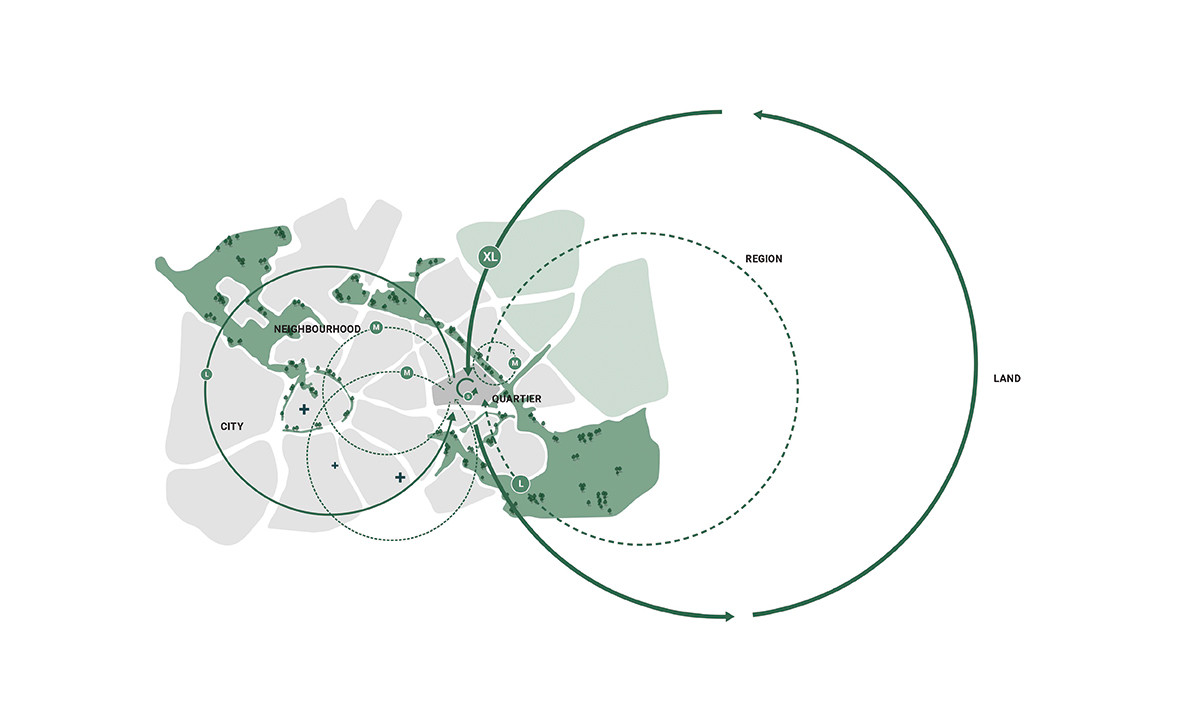


Team Karres en Brands, BSV, Metabolic and OWL – University of East Westphalia-Lippe worked together for the past few months on developing a proposal for former military barracks in Paderborn, Germany. The project transforms a mono-functional military area into a future quarter for the emerging regional center of Paderborn, interweaving with the surrounding landscape while respecting existing urban framework.

In our conceptual approach, we, therefore, take five universal urban challenges as hypotheses and we investigate how "City+Landscape" as a complex system can contribute and solve them strategically and spatially. We see Springbach Terrassen as a cooperative city, an open process of appropriation and a potential space experimentally exploring the questions of how to create the "Future District of Paderborn" as a new neighborhood that is not first built and then revitalized, but that can function as a part of the city from the very beginning. The Cooperative City should not only a space of opportunity for new ideas about the common good, ownership relationships and the emergence of housing concepts but also a platform for the emergence of a new type of neighborhood.

In the Cooperative City, the existing structure is the basis of the plan. The plan is not only physically connected to its surroundings and history, but also in every way an extension of it. Its structure rises from the framework of the Barker Barracks, transforming buildings, infrastructure, and green spaces, expanding into the surrounding area to connect with Paderborn and its surrounding countryside. A careful reading of the barracks’ logic reveals a clear structure along a series of strips that move from east to west. These represent different functions of the former barracks and thus take on both their own spatial logic and typological form. They form the basis that will guide the further development of the plan's structure.

A clear and robust structure in which diversity and a high degree of mixing can take place. Each of these strips adopts a recognizable typological strategy that combines open space, nature and development in new and exciting ways but based on the DNA of the site. To the south, the barrack strips adopt the specific courtyard typology of the barracks and define dynamic block structures that combine old and new in diverse and interesting ways. In the center of the plan, a vibrant north-south oriented strip reinterprets the Garage typology into a vibrant mix of living and working bordered in the south by the "Academic Mile" and in the north by the Boulevard. To the north, the large scale of the surrounding industry is brought together with the fine grain of the nearby housing areas into an exciting mix structured by a field-like framework.
Alongside two other teams (ADEPT with Buro Happold & steg Hamburg and Cityförster with Felixx Landscape Architects & Planners, Transsolar KlimaEngineering and Burkhard Horn Mobilitätskonzeptionen) we’re investigating topics of “Smart City” and “Density”. All three proposals form a basis for the further development of a new neighborhood in Paderborn, that will be brought together by the supervising office Urbanista. In addition to the spatial planning process, all participating teams were involved in dialogue sessions with the citizens of Paderborn and centrally involved Think Tank on different stages of the project to ensure local embedding of the process.

